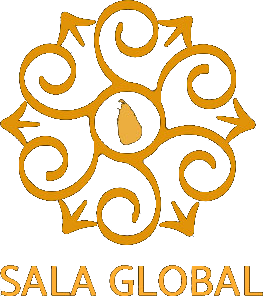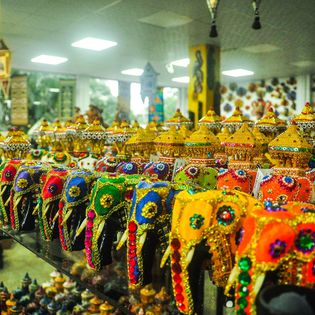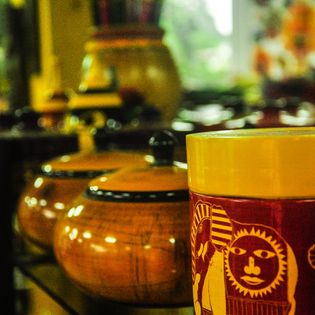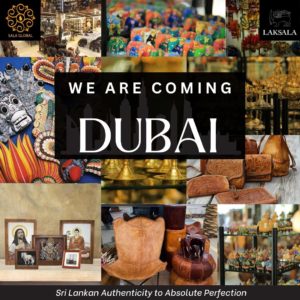
Creating Masterpieces: The Magic of Gem-Dusted Images in Art and Craft
Introduction: Gem-dusted art is a captivating form of creative expression that fuses the elegance of gemstones with artistic vision. This blog explores the mesmerizing world of gem-dusted arts, delving into what it is, the creative process, and the beauty it brings to the art scene. Whether you’re an art enthusiast, a DIY hobbyist, or someone who’s just curious, this blog takes you on a journey through the enchanting realm of gem-dusted arts.
What is Gem-Dusted Art?
Gem-dusted art, also known as gemstone art, is a unique art form that involves the meticulous placement of small, precious gemstones onto a canvas or other surfaces. This intricate process results in a three-dimensional masterpiece that shimmers and sparkles from every angle. Artists use a variety of gemstones with diverse colors, sizes, and shapes to achieve their desired effect.
The Artistic Process:
1. Materials and Tools:
Creating gem-dusted art necessitates a selection of gemstones, adhesive, a base surface, and several crafting tools. Gemstones are chosen for their unique qualities, such as color, texture, and size. Common gemstone choices include rhinestones, crystals, and semi-precious stones. Adhesives like jewelry glue or epoxy resin are used to secure the gemstones to the surface.
2. Design and Layout:
Before applying the gemstones, artists meticulously plan the layout of their image. This design can be an original creation, a reproduction of a famous artwork, or even a portrait. The precise positioning of each gemstone is critical to bringing the image to life.
3. Application:
With patience and precision, each gemstone is delicately affixed to the surface using the chosen adhesive. This step requires an eye for detail, as the placement of each gemstone plays a significant role in the overall effect of the artwork.
4. Curing and Sealing:
Once all the gemstones are in place, the artwork may need time to cure, depending on the adhesive used. A final step involves sealing the gem-dusted art with a clear coat to protect it and enhance its luster.
Diverse Creations:
Gem-dusted art is not limited to traditional forms; crafters and artists often incorporate this technique into a wide range of projects, including:
- Greeting Cards: Design personalized greeting cards with gem-dusted images to add a touch of elegance and sparkle to your messages.
- Home Decor: Create gem-dusted wall art, mirrors, or photo frames to infuse your living spaces with opulence and glamour.
- Fashion: Embellish clothing, accessories, or shoes with gem-dusted designs to make a stylish and radiant statement.
- Unique Gifts: Craft memorable and one-of-a-kind gifts by incorporating gem-dusted images into jewelry boxes, keychains, or custom-made pieces.
The Magic of Gem-Dusted Arts:
Gem-dusted art offers endless possibilities for artists and crafters to explore their creative talents and create visually stunning pieces that captivate the viewer. Whether you’re a seasoned artist or just starting your creative journey, gem-dusted art promises a magical and alluring world of unlimited potential.
In conclusion, gem-dusted art is a fusion of art and craft that allows individuals to unleash their creativity and craft visually captivating pieces that enthrall the beholder. Whether you’re looking for a luxurious touch in your life, a unique gift idea, or a way to express your artistic flair, gem-dusted art delivers a touch of enchantment to the world of creativity.
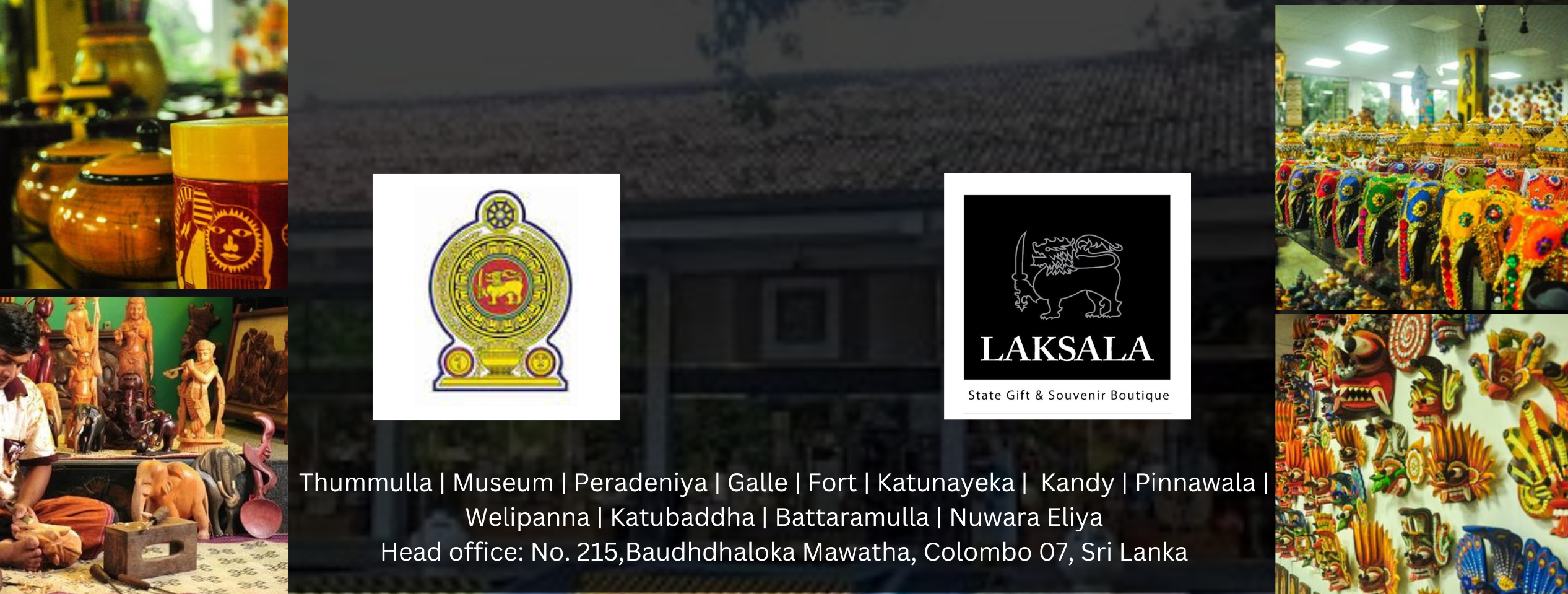
LAKSALA
History of Laksala
Sri Lanka Handicrafts Board was established on the 17th of January 1983, under the National Crafts Council & allied Institutions Act No. 35 of 1982. The Sri Lankan Handicrafts Board is better known as “LAKSALA” is a state corporation under the Ministry of Rural Industries and Self Employment Promotion is set up to preserve and develop traditional skill of the craftsmen. The Board is dealing with nearly 3500 leading master craftsmen/entrepreneurs who are producing handicraft item at Rural/Cottage industry level. “LAKSALA” is the only state owned handicraft marketing organization in Sri Lanka deals with provision of training to craftsmen and marketing and export promotion of handicrafts. The board handles 140 Training centers, 23 sales outlets and 14 provincial purchasing points for the purpose of achieving its objectives.
Laksala has witnessed numerous changes with an ever-growing list of products on sale. Today Laksala operates through 12 branches located island wide and offer the widest variety of all Sri Lankan products at a reasonable price. Most importantly, Laksala enables the numerous industries that supply goods to it to stay both profitable and in business. Today you will find an eclectic blend of items ranging from selections of beautifully packaged tea and spices to, colorful batik ware to an elaborate collection of art and craft as well as the finest collection of traditional Sri Lankan Gems and Jewellery. Laksala is therefore your one stop guide and a visit to one of our stores feels like you visited ‘All of Sri Lanka!’
Sourcing
Laksala Vision
To continue to be the leader in the gift and souvenir market in Sri Lanka.
Laksala Mission
Be a commercially viable, socially responsible marketing organization which creates opportunities for rural products to enter mega – markets, thereby enhancing the growth potential of the gift and souvenir category and adding value to the tourism sector.
Laksala Location
Laksala main office located at Thummulla and has 12 different locations all around Sri Lanka.
Thummulla | Museum | Peradeniya | Galle | Fort | Katunayeka | Kandy | Pinnawala |
Welipanna | Katubaddha | Battaramulla | Nuwara Eliya
Most recently Laksala took its first step towards establishing an international showroom chain. Sala Global have join together to open their first showroom in Dubai Global village.
Online Shopping & International Shipping
We are delighted to inform you that our online Shopping Cart and International Shipping Platform which is www.salaglobal.com. This means you can browse our website and take your picks as you wish and send them to friends and family, anywhere in the world or have something tasteful delivered straight to your doorstep, wherever you maybe.
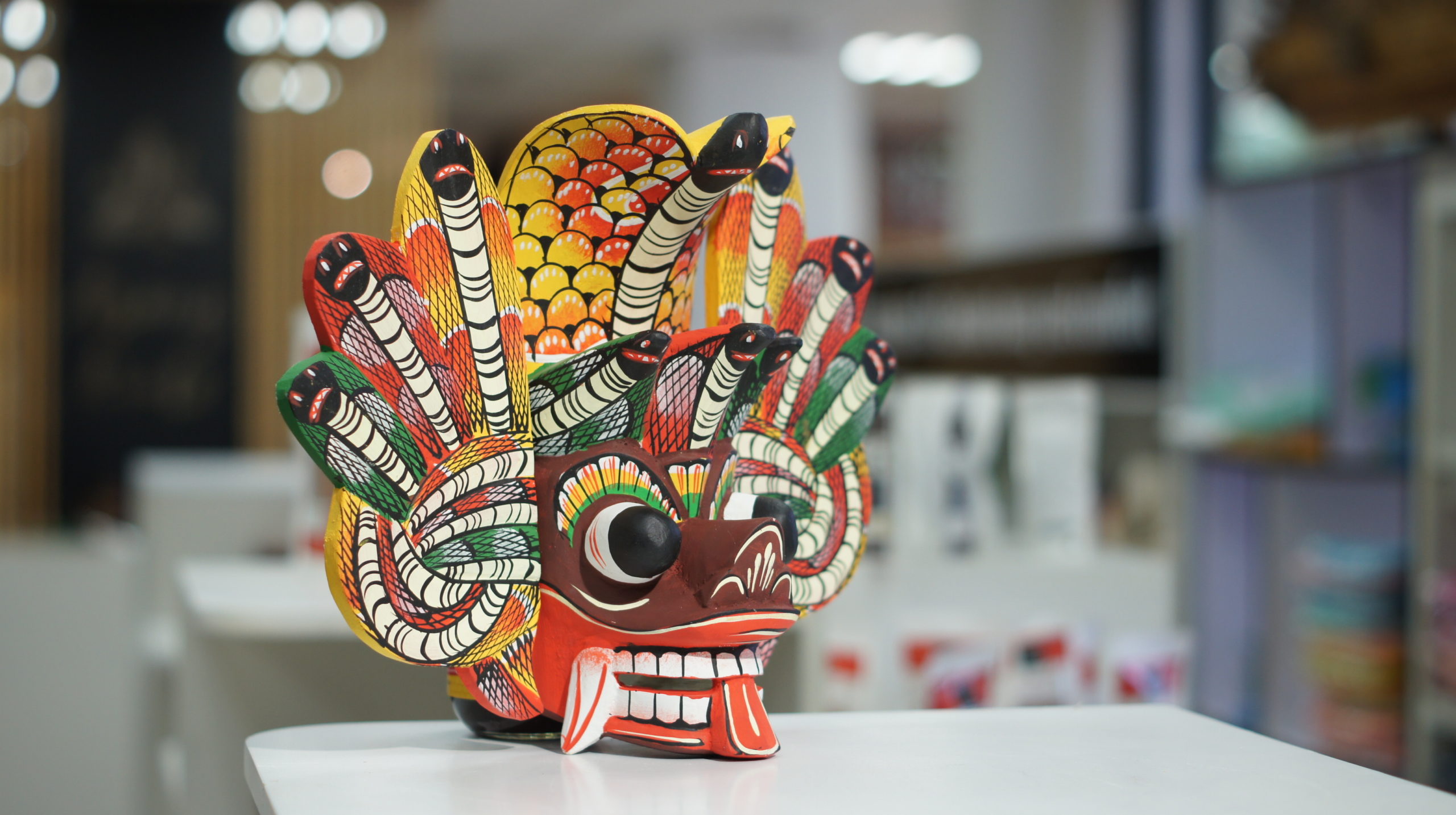
Finest Sri Lankan Traditional handcrafed Wooden Masks
The history of Sri Lankan masks actually dates as far back as the 15th century, with strong links to devil-worship. For anyone interested in the art of Sri Lankan mask carving and mask dances, a trip to Ambalangoda is a must. Different parts of this island nation has mastered different types of arts for the last thousand years or so, and the Southern part of the island has many arts and history contained.
For example the Southern dance style, the Southern musical instruments, even the way they fish is an art that no other part in the island follows. Travelling south from Colombo you will find the city of Ambalangoda- the city of masks. Here in this video you will find a very special stories behind these masks revealed.
There you will find Laksala a museum, workshop and library dedicated to everything mask related.
In Sri Lanka, we mainly use masks for mask dances, while hanging masks in the household to cast off the evil eye is also popular. There are three types of mask dances: Raksha (Demon), Kolam (Folktale) and Sanni (Devil Dance). Apparently, there are eighteen different Sanni masks, each specializing in curing specific illnesses.
While the production of handcrafted masks using traditional methods and the performing of devil dances to cure ailments have both greatly diminished in recent years, the making of synthetic masks and the enactment of devil dances for outsiders is still popular in the southern coastal region. Besides, surely it’s reassuring to know that whether you’re seeking protection from snakes or fire, or suffering from nightmares, nausea, epilepsy or blindness, there’s always a Sri Lankan mask cure for all your problems.

Finest Lacquer work in Sri Lanka (Laksha)
These skillfully made traditional handicrafts are a very popular choice amongst tourists and seekers of tokens depicting Sri Lankan culture. Originating in central part of Sri Lanka, the knowledge of lacquer making has spread throughout the island over the centuries.
The base product for the traditional lacquerware is a wax derived from a species of insects, which is imported from India. Whilst the age-old methods are used by some, new tools and procedures introduced with time are preferred by the others in the making of these complex and exquisite designs.
Colourful and bright walking sticks, handles of flags and hand-fans, bowls, vases, containers and decorative items made with lacquer work are seen island-wide.

Traditional Arts and crafts Collection in Sri Lanka
Jewellery, masks, lacquerware and more – discover the colourful and creative arts and crafts unique to Sri Lanka.
Colour, creativity and commerce abound when it comes to arts and crafts in Sri Lanka. Tradition and heritage are king, and people have been creating everything from jewellery to masks, lacquerware and ceramics here for time immemorial. While it hurts a little to bring the word ‘souvenir’ into such a proud piece of cultural heritage, sometimes two plus two equals four. These distinctive mementoes are available throughout the stores of Colombo but travel outside the capital to see the work that goes into making them. Prepare to be spellbound as deft hands weave intricate lace patterns out of nothing, or be amazed as the pottery wheels of Molagoda do their thing.
Masks
Masks are deeply connected to Sri Lankan folk-lore and take on a functional role where they are used in healing rites and rituals. Known popularly as devil dances, some are dance-drama performances that tell an elaborate story and is enacted by experienced dancers and actors wearing these masks.
One of the most popular and ancient acts is the 18 Sanni that are thought to represent diseases or ailments caused by yakkas (devils). Eighteen masks carved to represent the torment felt through these diseases are worn by an exorcist and a tovil, a devil dance, is performed. Other popular mask dances or dramas are Kolam and Raksha, one a comedic performance and the other masks mainly used in festivals and processions.
Ambalangoda is known to be the heart of mask carving with many shops dotting the roadside as you drive along this coastal town. If you happen to pop into one of the stores, you will be able to see how these masks are carved and painted with brilliant colours and take one along as well.
Handloom
Long ago handloom was reserved exclusively for the royalty and the renowned in the country and special villages were designated to practice the craft. However, now Handloom is generally found around the island as a self-employed or entrepreneurial activity where this skill which has been passed down from generation to generation has been revived and practised.
Among handloom products in Sri Lanka are, curtains, cushion covers and other household decorative items, saris and garments as well as everyday items such as books and bags.
Handwoven fabrics, with their vibrant colours and simple or elaborate patterns, have become a favourite among shoppers.
Dumbara weaves
Dumbara weaves, a unique work of art once found only as decorative pieces and mats are now seen integrated into the modern world; it can now be seen infused with designs of wall hangings and decorative items, bags and purses, rugs and carpets along with household utilities such as table mats and sheets.
The art is said to have originated in the village of Thalagune Uda Dumbara, where still a handful of Dumbara weavers—descendants of the ones who practised the craft during the Kandyan era still remains carrying on the legacy. The skill is well guarded within the few families that hold the secret to this amazing art.
The designs found on the Dumbara weavers products are specific to the Sri Lankan culture and reflect the traditions within its intricate weave-work.
Lacquer work (Laksha)
These skillfully made traditional handicrafts are a very popular choice amongst tourists and seekers of tokens depicting Sri Lankan culture. Originating in central Sri Lanka, the knowledge of lacquer making has spread throughout the island over the centuries.
The base product for the traditional lacquerware is a wax derived from a species of insects, which is imported directly from India. Whilst the age-old methods are used by some, new tools and procedures introduced with time are preferred by the others in the making of these complex and exquisite designs.
Colourful and bright walking sticks and handles of flags and hand-fans, bowls, vases, containers and decorative items made with lacquer work are seen island-wide.
Making of traditional drums
The traditional drums, or Bera, is undoubtedly part of the Sri Lankan culture.
The special skill and craftsmanship required for the making of these drums are possessed by a numbered few—communities across Kurunegala and Hodiyadeniya in the Kandy district.
The body of the drum is fashioned mostly out of Jack tree, and the skin is made out of an animal hide. After long hours of divided work within each group, the keen and detail-oriented drum makers present beautifully shaped and designed drums with the right sound.
Brass work
Products made out of brass have been used in everyday life in Sri Lanka. Brass products are either wrought or cast and adorned with carvings or designs. Some of these products include artefacts used for religious purposes such as oil lamps, as well as household utilities including boxes, baskets, chairs, trays, containers, locks, hinges and vases.
.

